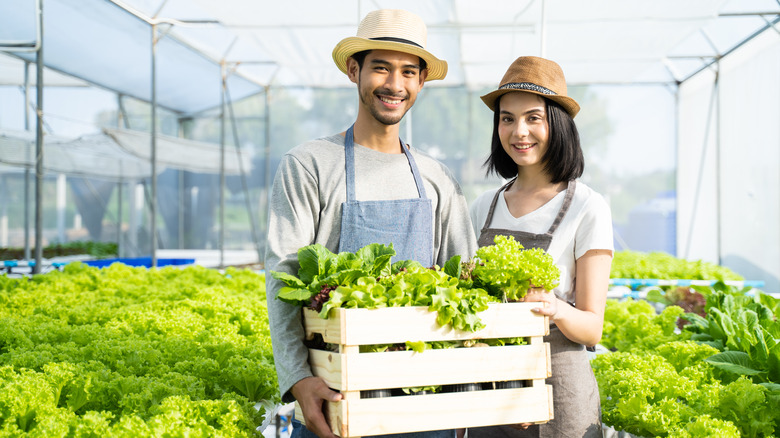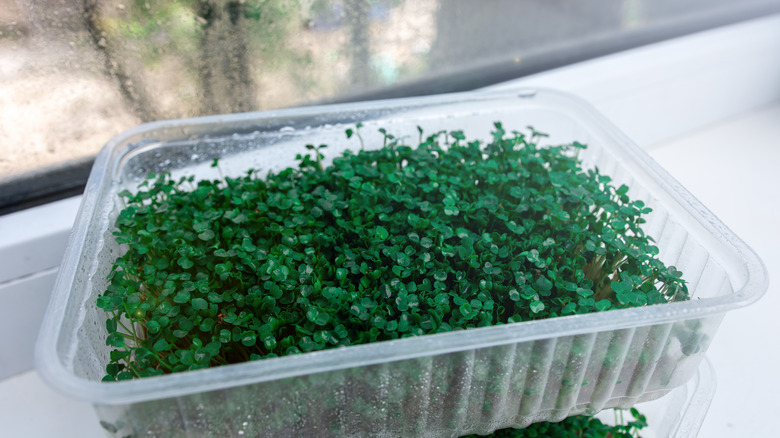10 Easy Ways You Can DIY Your Own Hydroponic Garden
A hydroponic medium is a highly efficient indoor garden system for growing plants without using soil. You can grow almost anything inside your home with just water, some nutrients, and organic material like perlite, rock wool, or peat moss. Because it bypasses the barriers between the minerals and the plant's roots, hydroponic gardening is one of the most productive cultivation methods. Some popular systems include fish tank hydroponics, tower gardens, and buckets systems.
Without soil, the roots can almost simply "swallow up" all the nutrients. As a result, plants not only grow faster, but they are also a lot cleaner to have in your home, Home Bounties explained. The only aspect to keep in mind is that your hydroponic plants will require some form of a light source, whether it's sunlight from a window or energy from a grow lamp if you own one. There are various ways to design your own hydroponic system besides these, as you can adjust and personalize yours.
1. Eggshells
Eggshells are convenient, and the environmental impact is minimized since they are organic and biodegradable. In addition, you can put eggshell seedlings directly into the ground. Not only is nutrient-dense for your plants, but the eggshell is also calcium-dense. It also de-acidifies the soil and fertilizes your seedlings.
2. Gallon buckets
This hydroponic gardening system will probably be the cheapest solution you can find. You should be able to get all the supplies for under $100, but most of the items may already be in your home. Although this method is meant to produce four plants in 5-gallon buckets, you can change it to grow more or fewer plants.
3. Hydroponic garden towers
Because they don't waste energy to establish roots through the soil in search of nutrients, plants grow up to 50% faster when cultivated in hydroponic towers. And this method uses only around 10% of the water that typical crops do. You're also not confined to the smaller plants; you can grow tomatoes and other plants this way.
4. Aquaponics aquarium
This hydroponic system uses a tank with goldfish as the aquaculture component. The corner pump directs the water upward to the crop bed, a typical window still carrying the hydroton media in an elongated pot. This system is ideal for areas with little or no natural daylight, such as a garage.
5. Plastic container
You can produce lettuce, herbs, and greens all year in a hydroponic planter built from a reused coffee container or any type of container you have. This system is a non-circulating approach for growing lettuce that does not require electricity or pumps. You can cultivate the entire crop with only an initial supply of water and nutrients.
6. Window farm
If you have a sunny window, a hydroponic window garden from plastic bottles is the system for you. The key aspect of this window farming method is the revolutionary bottle cutting style, which eliminates the requirement for hard cone piercing at the bottom of the bottle and a swinging suspension mechanism.
7. PVC gutters
This system is conceptual but innovative: It grows plants in PVC gutters using the NFT technology. Use this method if you plan on growing plants in a window that does not have a table. The nutrition solution, growing baskets, and substrate you use are all dependent on what you want to grow.
8. Hydroponic vertical garden
These home hydroponic systems demand ample lighting and are best suited to gardeners with limited space. With the right organic fertilizer, you can cultivate a variety of veggies. Many of these vertical systems only utilize square buckets or round units stacked together and typically use perlite.
9. Drip garden
Like most systems, this structure also uses the Ebb and Flow model, which domestic hydroponics drip gardening is known for. The drip garden system allows the nutrients to be delivered via a water pump at a depth of several inches. It fills the tub and then drains back to the tank when the tub is full.
10. Single plant system
Hydroponic systems can be enormous structures that can hold up to 15 plants and take up a lot of space. However, you may only need a single plant structure. In that case, this single plant system is ideal for you, and it's easy to make using everyday household things, like a peat can or a plastic bottle.










